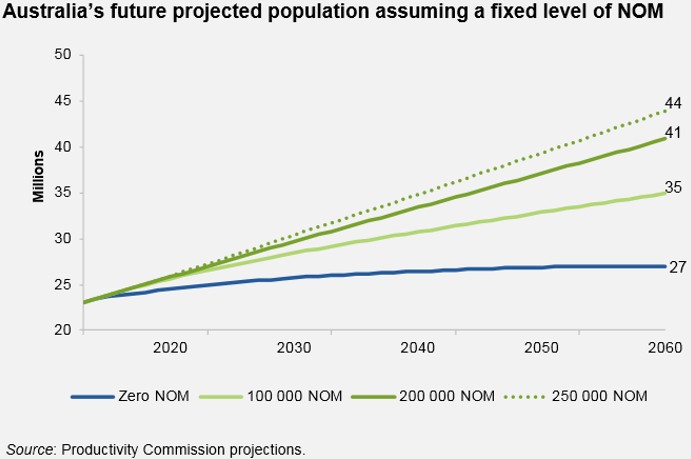For days I’ve been reading/hearing about how Sydney’s population will go from 4.5 million to 6.5 million in 20 years, and then to 8 million mid-century. This garbage has been reported as though there isn’t a policy decision behind why Sydney will grow that fast – as if it is a fait accompli. Of course each time I hear one of these reports they interview a bunch of self-serving tossers connected with property, business chambers, local council etc, rather than those pushing back against such rapid growth.
It’s the same story in Melbourne, whose population is projected to soar by 1,850 people per week (97,000 people per year) to more than 8 million by 2051.
Today, The AFR’s Michael Bleby has continued this trend penning a piece lecturing us about how Sydney has to change to accommodate projected population growth, citing research released this week by the Greater Sydney Commission:
It takes 45 minutes on a good day to drive from Liverpool, south-west of Parramatta, to central Sydney. On a bad day, when the M5 motorway is clogged, the 35-kilometre trip can take up to two hours.
That’s the case in a Greater Sydney that today has a population of 4.7 million. It’s hard to know what the commute would be like by 2056, when that figure is expected to top 8-million, says Jan McCredie, Liverpool City’s City Architect.
“We have been told that tradespeople leave home at 2am and 3am, go to their place of work, sleep two hours in their car and then start work,” McCredie says. “If you’re starting work at 7am or 8am, the traffic is so bad if you leave at 6am, and tradespeople really have to use their cars”…
Cities throughout the wide brown land have revelled in the the developmental luxury of sprawl and cheap land, but that is coming back to bite and is imposing economic and social costs the country can ill afford. Soaring house prices were permitting wealthier people to buy homes closer to jobs while poorer people had to settle for cheaper dwellings on the periphery without public transport and suffer long, petrol-based commutes to get to work, the federal government’s own State of Australian Cities 2014-2015 report found…
Without a body co-ordinating growth and pulling it together from above, which Sydney’s commission seeks to do in conjunction with local councils on the ground, development will be business as usual…
The article goes on to quote the Property Council of Australia talking its own book (as per usual).
While I don’t have an issue with what Bleby has written – Australia’s planning is indeed woeful and needs to be better coordinated – it’s what he has omitted from the discussion that is so annoying. Like just about every other commentator on this issue they fail to question Australia’s rapid immigration-fueled population growth which is choking Australia’s big cities.

As the Productivity Commission illustrated in its recent Migrant Intake Australia report, immigration policy is a defacto population policy. If our policy makers choose to persist with a high immigration program then Australia’s population will hit 40 million or more by 2060. However, if we cut immigration back significantly, Australia’s population will be much smaller, as it will be in our major cities (see next chart).

Indeed, the Productivity Commission estimated a 13 million difference in Australia’s population size in 2060 between persisting with historical rates of immigration (40 million) and zero net overseas migration (27 million).
Given the strains across our big cities, Blind Freddy can see that the optimal thing to do is to reduce Australia’s net overseas migration to much lower levels than the circa 200,000 currently. This would unquestionably relieve pressures on housing, congestion and living standards, while forestalling the need for costly retrofitting of infrastructure to accommodate more people.
It is a policy choice how big and crowded Australia becomes. We must exercise this choice by cutting immigration significantly and aiming for a smaller, more sustainable and more liveable Australia.
unconventionaleconomist@hotmail.com

